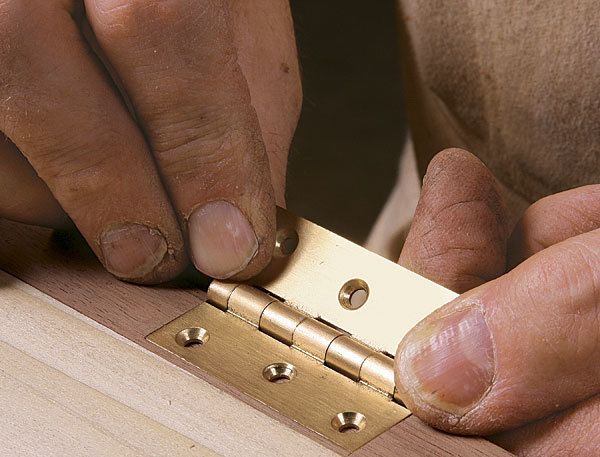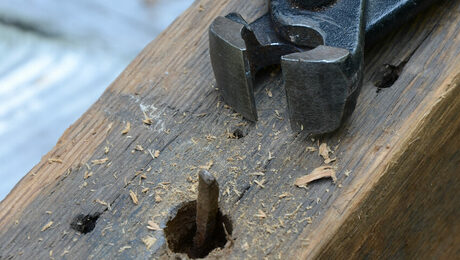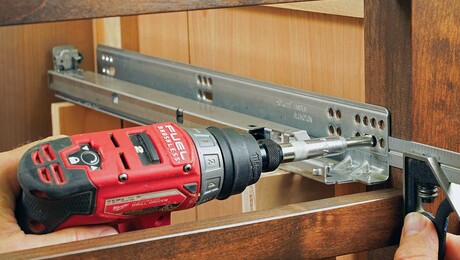Flawless Hinges in Fine Furniture
Install precise butt hinges in projects of all kinds
Synopsis: Although a butt hinge consists of little more than two pieces of metal connected by a knuckle joint, it can provide a lifetime of service in anything from cabinets to small boxes. And the low-profile look is hard to beat. But these hinges can be fussy to install. You need to mortise them carefully into the door and cabinet, making sure to leave an even gap around the door and a perfect fit around the hinges themselves. Luckily, Steve Latta has years of experience teaching students how to install flawless hinges, and he’s sharing his time-tested method here.
The butt hinge is the most common type of door hardware, and for good reason. It provides a lifetime of smooth service in everything from large cabinets to small boxes, with a low-profile look that exudes class. Although the butt hinge is a simple device—just two pieces of flat metal connected by a knuckle joint—it can be fussy to install, especially for beginning woodworkers. You have to mortise the hinges carefully into the door and cabinet, with a nice, even gap between the two and, at the same time, no unsightly gaps around the hinges themselves.
The job doesn’t have to be scary. I’ll show you my time-tested method for installing top-quality, brass butt hinges, from laying out each mortise to cutting them precisely for a door that looks as good as it swings. You’ll need a combination square (preferably a small one), a small router, a marking knife, and a basic set of chisels.
Before you start, you need to have the door fitted to its opening on three edges (see Fundamentals, “Fitting an inset door,” on p. 20). You’ll fine-tune the last edge, called the striker stile (opposite the hinge stile), once the door is attached.
Good hinges are a great value
My most important advice is to buy the highest-quality hinges. A $5 pair of plated, rolled hinges purchased at the local bigbox store will waste your time and insult the piece you are building. get extruded, all-brass hinges from a reputable hardware supplier. The “precision butt hinges” from Horton-Brasses.com are a great example. They have flat leaves, not tapered, making them easier to install; they have the perfect 1 ⁄32-in. gap between them when closed, meaning you can mortise them flush; and they come with both steel and brass screws. You’ll see why that’s important later.
It’s important to pick the right size of hinge, too. The size of a butt hinge is described by its height and open width. You want 3⁄32 in. to 1⁄8 in. of wood left at the back of the hinge mortise. So I typically use 2-in. by 11⁄2-in. hinges, which have 5⁄8-in.-wide leaves. These work well on doors 3⁄4 in. or thicker. For aesthetic reasons, I don’t like to use hinges much larger than this for furniture. For the largest doors, such as those on a secretary or bookcase, I’ll typically add a center hinge instead of beefing up the hardware size.
If you end up with hinges that are a little too wide for your project, you can scribe lines on the leaves and trim the hinge to those lines on a belt or disk sander.
No matter how well-made a pair of hinges are, or how identical they look, they need to be fitted individually because they sometimes have slight differences. Mark them by writing on the back side of a leaf so that you can remember where each hinge goes.
For the full article, download the PDF below:
Fine Woodworking Recommended Products

Bessey EKH Trigger Clamps

Bessey K-Body Parallel-Jaw Clamp

Stanley Powerlock 16-ft. tape measure






















Log in or create an account to post a comment.
Sign up Log in